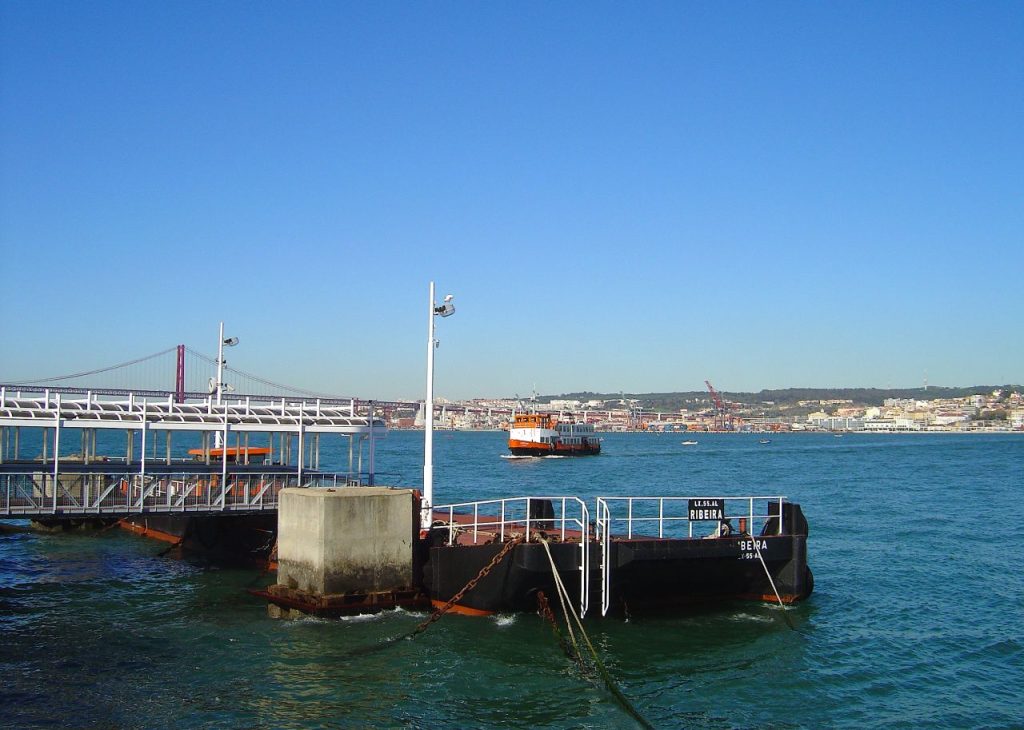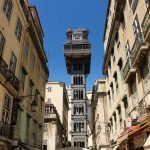Even when I’m traveling to a place I absolutely love, every once in a while I get a bit overwhelmed by the busy city life. When that happens, I like to take a little break from my sightseeing routine and explore some less-known place nearby.
In Lisbon, that place would often be Cacilhas, a waterfront district in Almada that is just a 15-minute ferry ride from Cais do Sodré. Known for its shipbuilding history, amazing seafood and authentic Portuguese atmosphere, this is one of my favorite places to unwind and relax.
Although it’s undergone considerable urban development in recent years, Cacilhas still preserves its distinct feel and local traditions. That’s why it’s the ideal place to experience the Portuguese lifestyle away from more common tourist routes.
In Cacilhas, you’ll find lots of seafood restaurants along the riverside, incredible views of Lisbon’s skyline, and unique attractions that showcase its maritime history. Sounds interesting? Then join me as I guide you through the charming district of Cacilhas!
Index
- How to get to Cacilhas from Lisbon?
- Top things to do in Cacilhas
- Events and festivals in Cacilhas
- One-day itinerary for Cacilhas from Lisbon
1. How to get to Cacilhas from Lisbon?
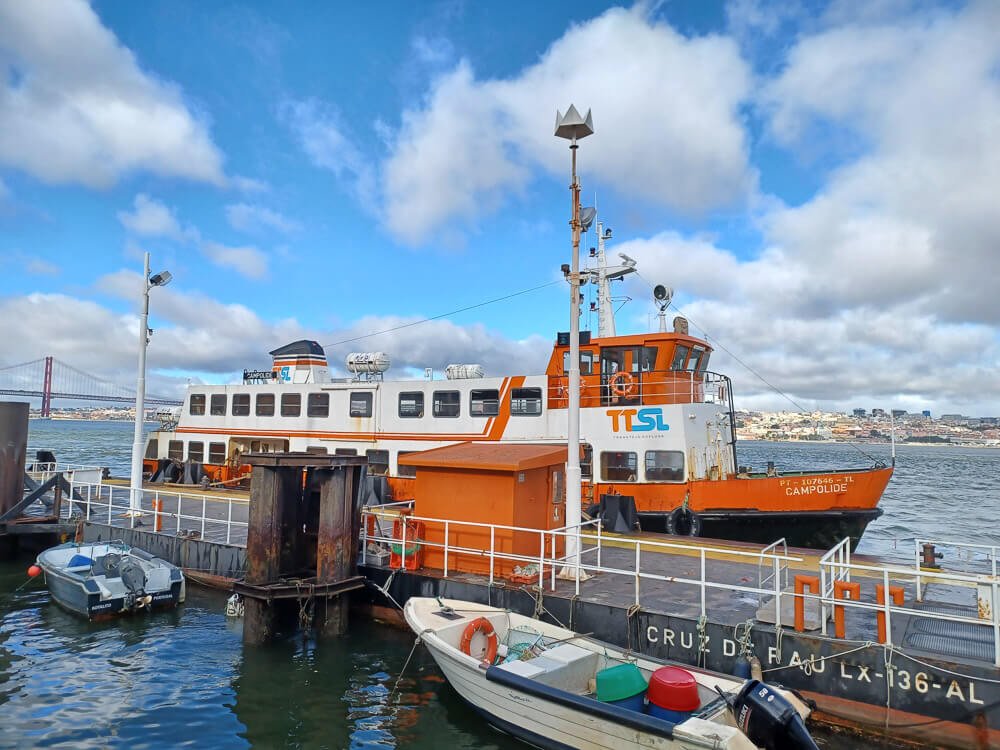
1.1. Ferry
The ferry is definitely the most popular way to get from Lisbon to Cacilhas. It’s not only practical and affordable, but also provides great city views (including the beautiful 25 de Abril Bridge across the river).
A single trip costs €1.40, payable through the Navegante ticket, which is a reusable card that can be used on all of Lisbon’s public transportation system. The journey takes about 15 minutes, and the ferries leave every 20 minutes from Cais do Sodré station and continue until 1:40 am (Lisbon) and 1:20 am (Cacilhas).
For better views during your ride, I recommend getting a window seat and avoiding traveling during peak hours, as the ferry can get a bit crowded.
1.2. Crossing the bridge
Another option to get to Cacilhas from Lisbon is by taking the bus from Cais do Sodré station to the Cacilhas station. The bus takes passengers through the 25 de Abril Bridge, offering different views of the city.
The journey takes about 34 minutes, and the buses run every day, with departures every four hours. Once in Cacilhas, you can explore local attractions on foot or continue your journey via other transport options available.
2. Top things to do in Cacilhas on a day trip from Lisbon
2.1. Rua Cândido dos Reis
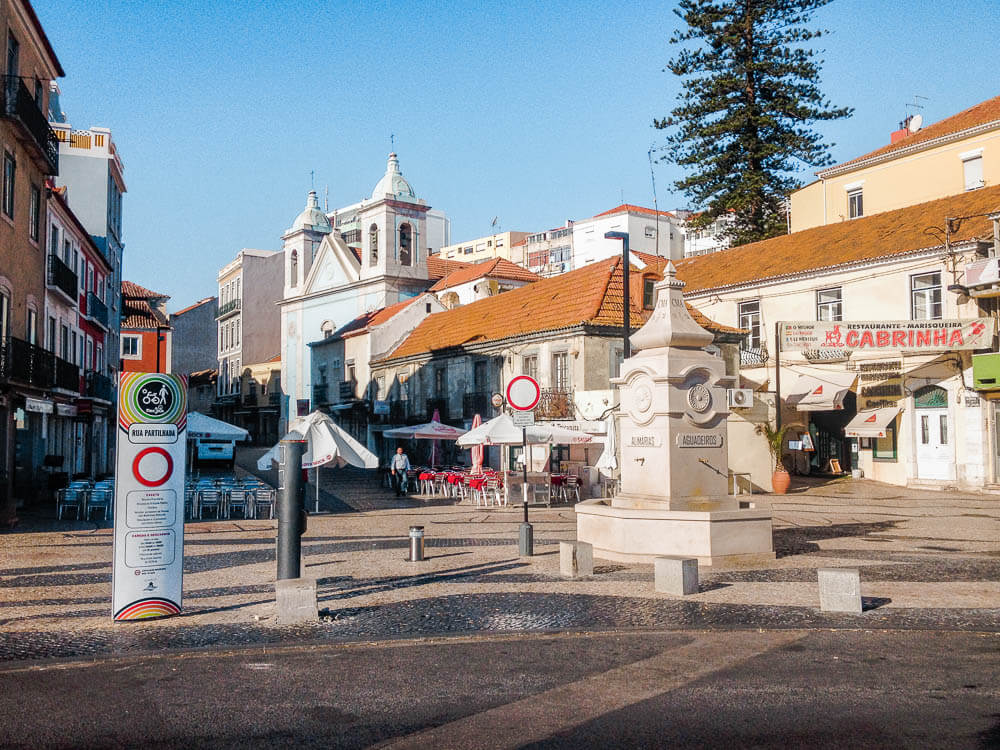
Rua Cândido dos Reis, situated in the center of Cacilhas, has long been a popular spot for both tourists and locals. Historically, this street was known for its taverns and inns that served as rest stops, and for offering donkey rides to explore the area.
Nowadays, Cândido dos Reis is a pedestrian-only street, which only contributed to its popularity. With new businesses and various events such as live music performances and art exhibitions, it’s one of the most popular streets in Almada and nearby regions.
Besides that, the street also features several establishments that offer a variety of food and drinks, from traditional Portuguese dishes to international cuisine.
2.2. Frigate D. Fernando II and Glória
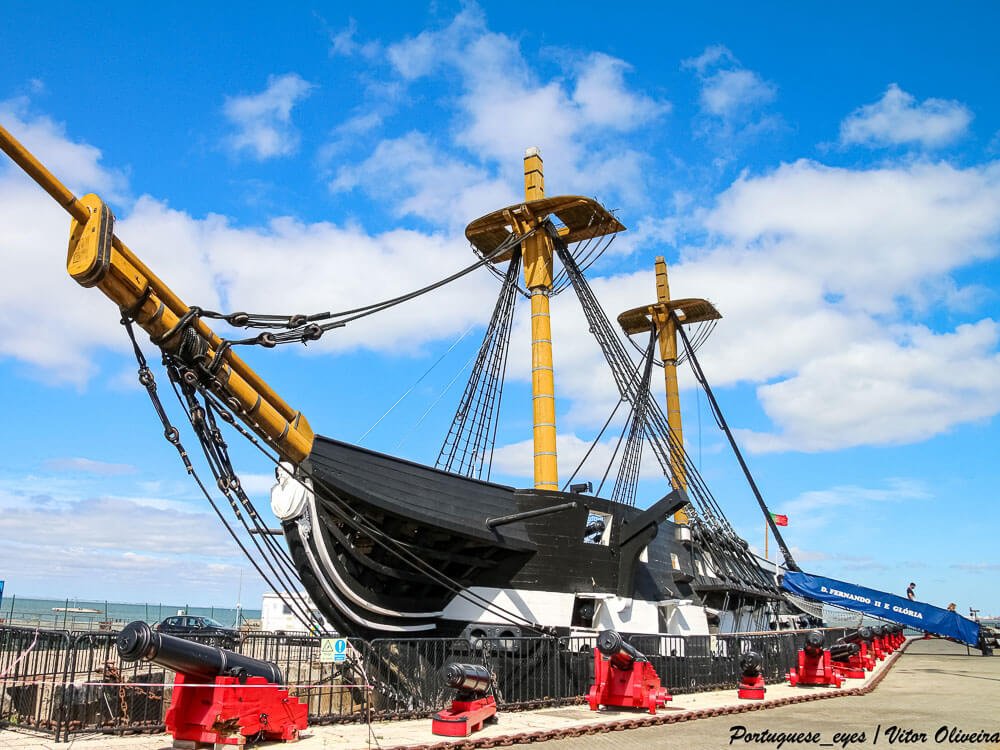
The Dom Fernando II e Glória frigate, which serves as a floating museum in Cacilhas, holds a notable place in maritime history as the last sail-driven ship built by the Portuguese navy.
Constructed in Daman, India, and launched in 1843, it’s recognized as both the 4th oldest armed frigate and the 8th oldest sailing warship worldwide.
After being outfitted in Goa, the Dom Fernando II e Glória made its maiden voyage to Lisbon in 1845. Until 1878, it served various functions, including voyages to Africa and routes to Madeira and the Azores, before being repurposed as a training vessel for naval cadets.
In 1963, while docked at Cacilhas in Lisbon, a fire significantly damaged the frigate, ending its active service. However, due to its historical importance, restoration began in the 1990s and was completed by 1998, in time to participate in Expo ’98 held in Lisbon.
Today, the frigate invites both local and international visitors to explore Portugal’s nautical heritage and learn about its significant role in maritime history.
2.3. Church of Our Lady of the Good Success
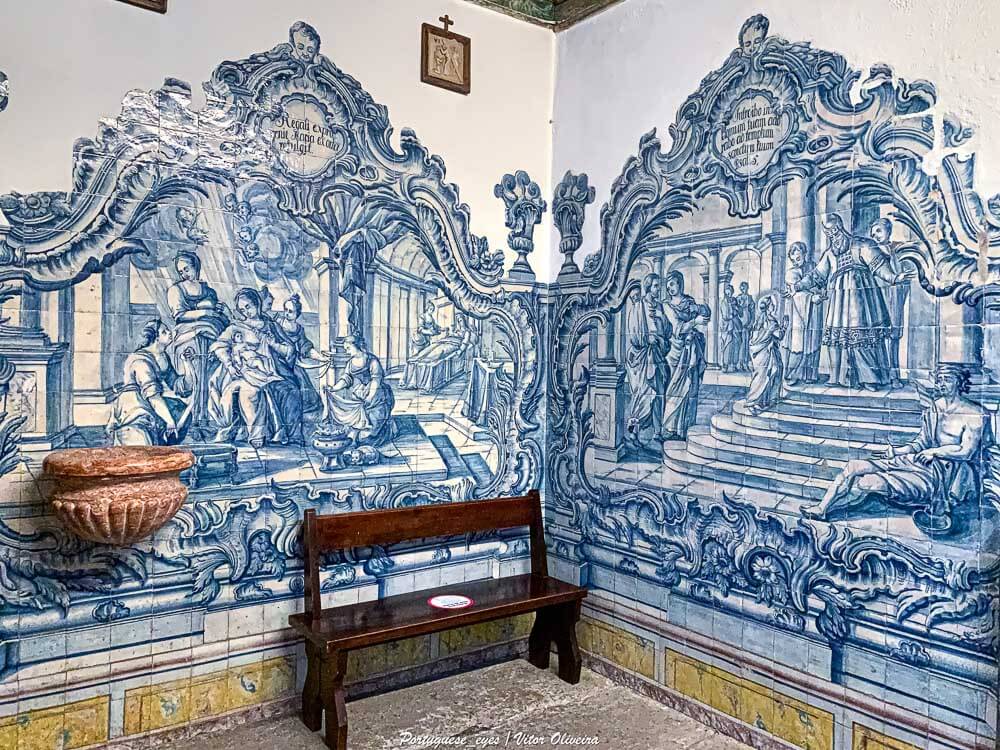
The Church of Our Lady of the Good Success, located in Cacilhas, is an important historical and religious site. Built in 1759 on the foundations of the older Hermitage of Santa Luzia, which was destroyed by the 1755 Lisbon earthquake, the church provided a necessary place of worship for the community affected by the tragedy.
It features a single nave design characteristic of its time and is decorated with monochromatic tile panels from the 18th century, reflecting Portugal’s tradition in tile artistry. With its blue façade, the church is a distinctive landmark in the district.
An annual procession on November 1st, All Saints’ Day, honors Our Lady of Bom Sucesso (Good Success), who is considered Cacilhas’ patron saint and is believed to have protected locals from tsunamis after earthquakes.
Accessible via the ferry to Cacilhas, it’s conveniently located near key transport links, allowing for easy exploration alongside panoramic views of the waterfront and surrounding historical sites.
2.4. Cristo Rei

The Cristo Rei statue, which overlooks Lisbon and the Tagus River, is the most famous landmark in Cacilhas. Drawing inspiration from Rio de Janeiro’s Christ the Redeemer, Cristo Rei represents Portugal’s endurance and acts as a symbol of hope and faith.
The structure was proposed by Cardinal Patriarch Manuel Gonçalves Cerejeira in the 1930s, and it started being built to address the global tensions following World War II and the nuclear arms race. It was completed in 1959, after over two decades of planning.
Positioned at 100 meters high on ground that is 82 meters above sea level, Cristo Rei provides visitors with extensive views over Lisbon from its platform at 80 meters. To access this point, there’s an elevator with a panoramic view.
Just keep in mind that if you go to Cristo Rei on a foggy or cloudy day, you won’t get the best views. I highly recommend visiting on clear days, when you can see all of Lisbon from up there. It’s totally worth the journey!
2.5. Boca do Vento Elevator
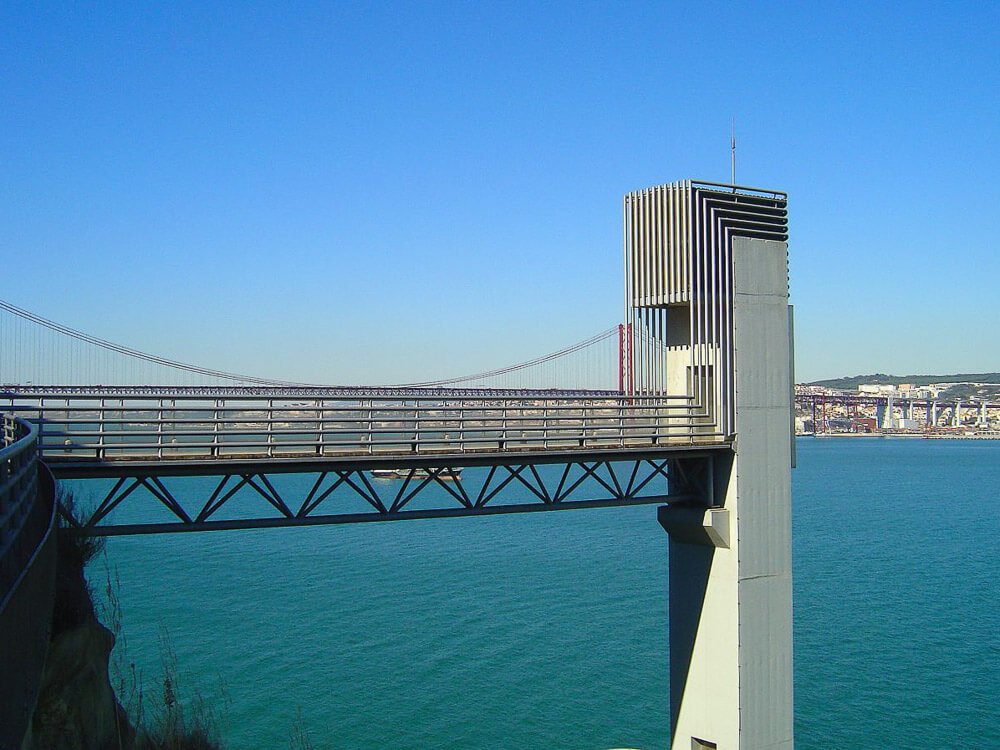
The Boca do Vento Panoramic Elevator was inaugurated in 2000 and connects the historic center of Cacilhas to the Jardim do Rio.
Its glass cabin reaches a height of 50 meters, providing breathtaking views over Lisbon and the Tagus River. Upon arrival, there’s a terrace where you can take some time to relax and take in the views.
Easily accessible, it’s suitable for people of all ages and serves as a less crowded alternative to Cristo Rei. It operates daily from 10am to 8pm, offering free rides every 15 minutes. Keep in mind that there may be some waiting time, especially during sunset.
2.6. Jardim do Rio
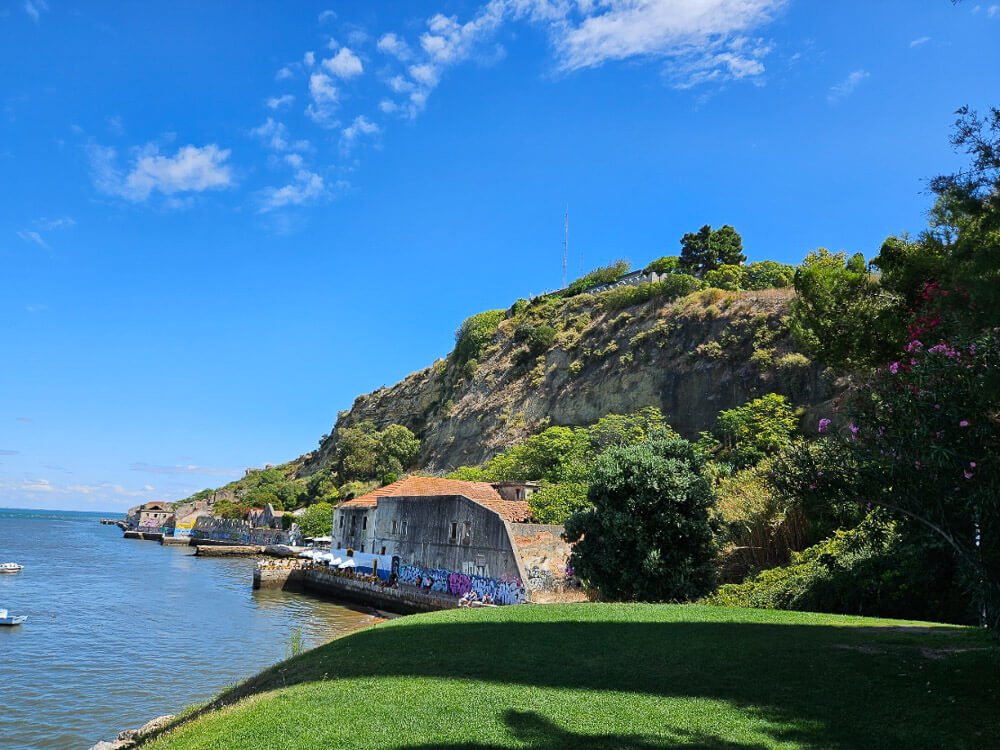
Jardim do Rio, situated between the cliffs of Cacilhas and the Tagus River, is a spacious garden that offers natural beauty within an engaging community setting, making it an excellent choice for relaxation near nature.
With lots of shaded areas and great views, it’s the perfect place for relaxing, going for a picnic or taking a stroll along the Tagus. The garden is also known for its cats, who are cared for by locals and charities, and add an adorable aspect to visits.
Jardim do Rio is one of those places that are popular among locals, but less known to tourists, making it a more peaceful and less crowded alternative to more touristy sites. To access it, you’ll need to take the Boca do Vento Elevator, which is not only convenient but also offers incredible views.
2.7. Quinta de Arealva

Quinta de Arealva, an abandoned winery in Cacilhas, Portugal, is a spot rich in artistic and scenic appeal. Though it no longer functions as a winery, the estate attracts visitors due to its various artworks and murals, as well as the fact that it was used as a filming location for Neflix’s “Money Heist”
From there, you’ll also enjoy striking views of the 25 April Bridge, downtown Lisbon, and the Tagus River, especially at sunset.
The property offers several paths for exploration, each with unique photo opportunities. One of them goes through the middle and leads to different areas of interest, while another path goes up a staircase into a shaded forest area.
Throughout the building, there are signs of its former use, such as old living quarters with a garden and tiled annexes where more artwork can be discovered.
However, exploring Quinta de Arealva requires caution, as there are multiple buildings with staircases to various levels, some of which have dead ends or damaged structures.
2.8. Casa da Cerca
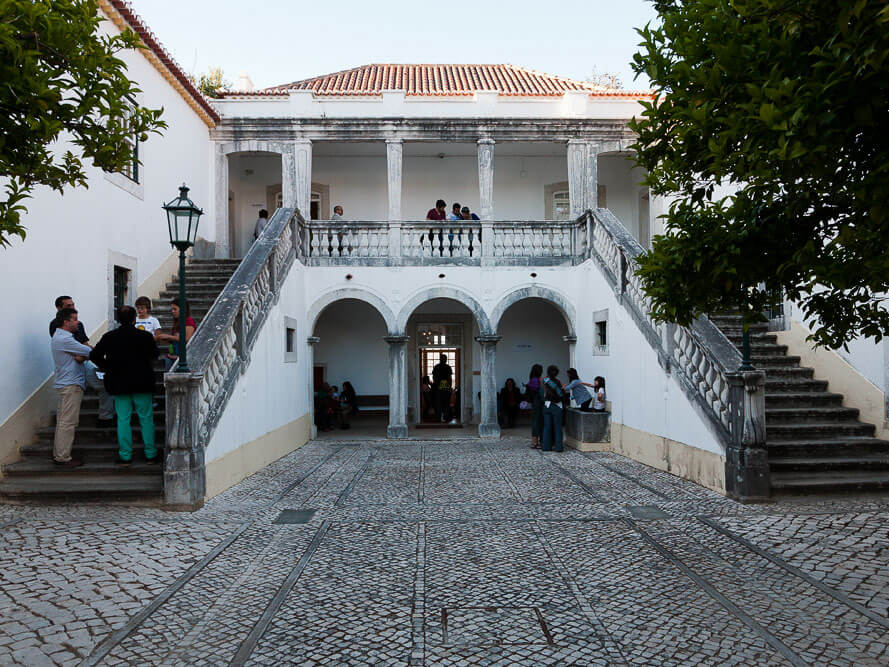
Casa da Cerca is a manor house dating from the late 17th to early 18th centuries. Originally, it was part of a recreational estate known as “Palácio” or “Quinta da Cerca”. Now, it consists of various architectural bodies added throughout its history.
The ground floor facing north is the oldest part of Casa da Cerca, and includes elements such as a 15th-century door and a former 18th-century chapel with tile panels.
The house has been occupied by numerous families and notable individuals until 1957, and was temporarily used by Almada Hospital in 1974. It was acquired by the Almada City Council in 1988, and underwent restoration from 1992 to 1993, when it reopened as a Contemporary Art Center.
Surrounding Casa da Cerca, you’ll find beautiful gardens that also host community events throughout the year. This allows visitors to enjoy exhibitions and cultural activities in a historical setting with a rich architectural heritage.
3. Events and festivals in Cacilhas
3.1. Festival do Caracol e da Cerveja
The Festival do Caracol e da Cerveja, held annually in Cacilhas, is one of the largest snail festivals in Portugal. Yes, that’s right! I bet you didn’t know that Portugal had a snail tradition, but it does!
During the festival, several establishments along Rua Cândido dos Reis serve seasoned snail trays with about 400 grams each for € 5, and beers for only € 1. The fact that it’s so affordable makes it a very popular event for locals and tourists to try these Portuguese delicacies.
It provides an opportunity not just to enjoy snails and beer, but also to engage with Portuguese traditions related to food and community gatherings. Definitely worth attending!
3.2. Sons de Outono: Almada Music Festival
The Sons de Outono Festival in Almada is a highly regarded annual event renowned for its focus on classical music. Held in local churches, the festival benefits from venues that enhance the acoustic quality of performances, attracting classical music enthusiasts who value live concerts in historically significant settings.
Featuring a diverse lineup performed by both established and emerging artists, the festival maintains high standards while introducing new interpretations of classic works. This unique approach has cultivated a loyal following and continues to draw new attendees each year.
The combination of the serene environments and exceptional sound quality allow participants to profoundly connect with the musical repertoire, providing a truly memorable experience.
3.3. Cacilhas Fair
The Feira de Cacilhas is an annual event that turns Cacilhas into a cultural and social center, where visitors can immerse themselves in the community’s cultural richness. The fair draws locals and tourists alike with its blend of music, food, and activities suitable for all ages.
It features performances by local musicians and artists, lots of dining options, and various engaging activities for children, fostering interactive experiences within a festive atmosphere.
Feira de Cacilhas celebrates both traditional and modern aspects, inviting everyone to discover the unique charm of the area while also contributing to the cultural scene. It stands out as a key event in the local calendar, welcoming all to enjoy diverse experiences and explore what makes Cacilhas special.
3.4. Almada Regional Products Fair
The Feira de Produtos Regionais de Almada showcases a diverse array of local products, highlighting the culinary and craft traditions of the region. Visitors can explore cheeses, wines, sweets, jams, honey, and sausages, supporting local producers and their gastronomic heritage.
But don’t think everything’s about food there! The event also offers live music, traditional dance shows, and craft exhibitions that showcase community skills, and handmade items for sale.
Designed to be family-friendly, the fair includes recreational activities for children that are both enjoyable and educational, promoting interaction with traditional crafts and customs.
Hosted annually in Cacilhas, the Feira de Produtos Regionais de Almada serves as a gathering place where families can come together to explore regional culture. It successfully provides a platform for locals and visitors to appreciate and support the local heritage through food, artistry, culture, and entertainment.
4. One-day itinerary for Cacilhas from Lisbon

So, have you decided to visit Cacilhas? If so, I’ve got the perfect itinerary for you to enjoy your day trip to the maximum!
First, start by enjoying lunch on Rua Cândido dos Reis, renowned for its diverse selection of traditional Portuguese dishes. Afterward, take a leisurely stroll along the pier for picturesque views across the Tagus River towards Lisbon, ideal for taking some great photos.
Next, visit the Elevador da Boca do Vento for panoramic views as it ascends to higher vantage points. At the top, explore Cristo Rei, which will probably make you feel as if you’re in Rio de Janeiro.
After taking in the sights, unwind at Jardim do Rio, a tranquil riverside garden. Then, finish off your day with a sunset dinner at one of the many restaurants that offer outdoor seating, taking advantage of Cacilhas’ calm evening environment.
If you have some time after dinner or simply want to explore more before heading back to Lisbon via ferry, I recommend browsing the local shops. Alternatively, you can catch some live music, which is typically found in neighborhood bars on weekends.
Cacilhas is a hidden treasure that shouldn’t be missed
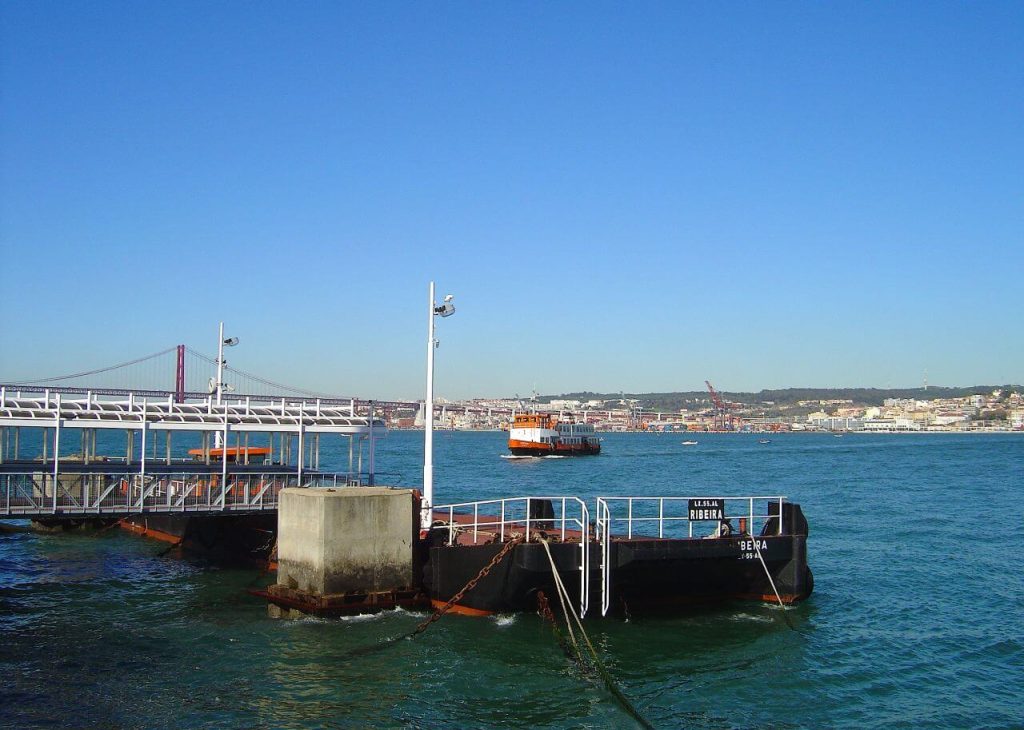
Cacilhas, just a ferry ride away from Lisbon, often goes unnoticed despite its authentic charm. With a genuine and relaxed atmosphere, this area offers a distinct experience from the typical tourist spots in central Lisbon, inviting visitors to engage closely with local life.
The journey to Cacilhas itself is part of the appeal. Departing from Lisbon’s Cais do Sodré station, the ferry crosses the Tagus River, providing scenic views of both city skylines. Upon arrival, the calm piers offer a contrast to the busy streets of downtown Lisbon.
Whether you’re dining alfresco at seafood restaurants on Rua Cândido dos Reis, browsing shops filled with crafts and antiques, or enjoying panoramic views of Lisbon, Cacilhas is definitely a worthwhile visit!

